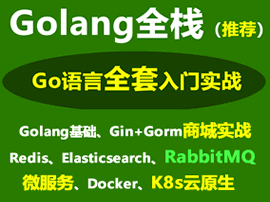Golang线程安全队列实现方案讨论
在Golang中实现线程安全队列时有哪些推荐的方式?想讨论下各种方案的优缺点,比如使用channel、sync.Mutex或者第三方库等。特别是在高并发场景下,哪种实现方式性能更好?有没有实际项目中的最佳实践可以分享?
2 回复
在Golang中实现线程安全队列主要有以下几种方案:
- channel方案 最简单直接,利用channel的天然并发安全特性:
queue := make(chan interface{}, bufferSize)
// 入队
queue <- item
// 出队
item := <-queue
适合固定缓冲的场景,但容量受限。
- sync.Mutex + slice 传统互斥锁方案:
type Queue struct {
items []interface{}
lock sync.Mutex
}
通过加锁保护slice操作,实现简单但性能一般。
- 无锁队列 使用atomic操作实现无锁队列:
type LockFreeQueue struct {
head, tail uint64
items []*interface{}
}
性能较高,但实现复杂,适合高并发场景。
- sync.Cond方案 使用条件变量实现阻塞队列:
type BlockingQueue struct {
items []interface{}
cond *sync.Cond
}
支持生产者-消费者模式,可实现阻塞等待。
选择建议:
- 简单场景用channel
- 需要动态扩容用mutex方案
- 极致性能考虑无锁队列
- 需要阻塞等待用条件变量
根据具体业务场景选择合适的实现方案。
更多关于Golang线程安全队列实现方案讨论的实战系列教程也可以访问 https://www.itying.com/category-94-b0.html
在Golang中实现线程安全队列主要有以下几种方案:
1. 使用sync.Mutex或sync.RWMutex
type SafeQueue struct {
mu sync.Mutex
items []interface{}
}
func (q *SafeQueue) Enqueue(item interface{}) {
q.mu.Lock()
defer q.mu.Unlock()
q.items = append(q.items, item)
}
func (q *SafeQueue) Dequeue() interface{} {
q.mu.Lock()
defer q.mu.Unlock()
if len(q.items) == 0 {
return nil
}
item := q.items[0]
q.items = q.items[1:]
return item
}
2. 使用channel实现
type ChannelQueue struct {
ch chan interface{}
}
func NewChannelQueue(size int) *ChannelQueue {
return &ChannelQueue{
ch: make(chan interface{}, size),
}
}
func (q *ChannelQueue) Enqueue(item interface{}) {
q.ch <- item
}
func (q *ChannelQueue) Dequeue() interface{} {
select {
case item := <-q.ch:
return item
default:
return nil
}
}
3. 使用sync.Cond实现阻塞队列
type BlockingQueue struct {
mu sync.Mutex
cond *sync.Cond
items []interface{}
}
func NewBlockingQueue() *BlockingQueue {
q := &BlockingQueue{}
q.cond = sync.NewCond(&q.mu)
return q
}
func (q *BlockingQueue) Enqueue(item interface{}) {
q.mu.Lock()
defer q.mu.Unlock()
q.items = append(q.items, item)
q.cond.Signal()
}
func (q *BlockingQueue) Dequeue() interface{} {
q.mu.Lock()
defer q.mu.Unlock()
for len(q.items) == 0 {
q.cond.Wait()
}
item := q.items[0]
q.items = q.items[1:]
return item
}
方案对比
- Mutex方案:简单直接,适合大多数场景
- Channel方案:Go语言推荐方式,天然线程安全,适合生产者-消费者模式
- sync.Cond方案:适合需要阻塞等待的场景
推荐选择
对于大多数应用场景,建议:
- 如果队列大小固定,使用channel
- 如果需要动态扩容,使用Mutex方案
- 如果需要阻塞操作,使用sync.Cond
根据具体需求选择合适的实现方案,确保性能和正确性的平衡。






